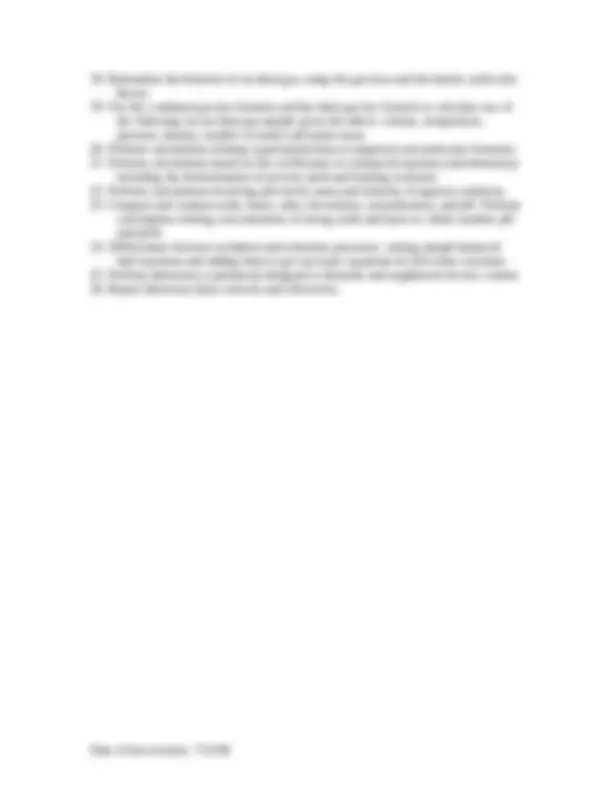



Study with the several resources on Docsity

Earn points by helping other students or get them with a premium plan


Prepare for your exams
Study with the several resources on Docsity

Earn points to download
Earn points by helping other students or get them with a premium plan
Community
Ask the community for help and clear up your study doubts
Discover the best universities in your country according to Docsity users
Free resources
Download our free guides on studying techniques, anxiety management strategies, and thesis advice from Docsity tutors
The catalog description, performance standards, and learning objectives for the introductory chemistry course (chm 1025c) at a university. The course covers various topics in chemistry, including the scientific method, properties of matter, dimensional analysis, atomic theory, bonding, gas laws, and acid-base chemistry. Students are expected to understand concepts, perform calculations, and apply theories to solve problems. Prerequisite: mat 1033 with a grade of ‘c’ or better.
Typology: Lab Reports
1 / 2

This page cannot be seen from the preview
Don't miss anything!


Introductory Chemistry (5) (A.A.) Catalog Description : Three hours lecture, three hours lab per week. Prerequisite: MAT 1033 with a grade of “C” or better. This course meets the Area V requirements for the A.A./A.A.S./A.S. general education requirements. This course is designed primarily to prepare students for entrance into the general chemistry course, CHM 2045C. Performance Standards: At the successful completion of this course, the student should be able to: